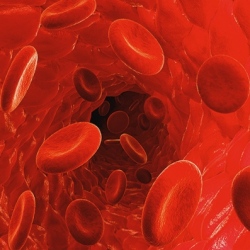
A team of scientists from Stanford University School of Medicine has discovered a blood-based genetic biomarker that could predict how likely a person is to become ill when exposed to the flu virus. If verified through further research this discovery could help investigations into developing an effective universal flu vaccine.
"There is huge variation in who gets the flu each year," says lead author of the study Erika Bongen. "We wanted to understand what immune factors might play a role in why people get sick. We hypothesized that there may be an immune state that protects from infection upon exposure and reduces susceptibility."
The research used a process called data repurposing to aggregate data from preexisting studies. The researchers gathered data from several influenza challenge studies where healthy volunteers infected themselves using a nasal spray and then had their immune response monitored. After extensive analysis, a single gene seemed to stand out in those subjects least likely to be infected.
"We found that a type of immune cell called a natural killer cell was consistently low at baseline in individuals who got infected," says Bongen. "Those who had a higher proportion of natural killer cells had better immune defenses and fought off illness. So we asked, ‘What are the genes that represent natural killer cells?’ And there turned out to be this one gene, KLRD1, that seemed to be a good target."
Natural killer cells are a type of white blood cell that is generated by the innate immune system when the body is subject to a viral attack. KLRD1 is a gene that is expressed on the surface of these natural killer cells. The study found that if KLRD1 was found on over 10 percent of natural killer cells a person did not succumb to the flu, whereas when it was seen in concentrations of under 10 percent the person ended up contracting the virus.
This fascinating correlation suggests KLRD1-expressing natural killer cells could be an effective biomarker in predicting how susceptible a person is to contracting the flu. The researchers are cautious to add that the conclusion is still based on a small sample set, so additional broader study is necessary to affirm the connection.
Further, the next stage is to better understand the mechanism that could be causing this effect. As well as using this research as a biomarker that could help direct future vaccination strategies, understanding how this mechanism works may clarify a path to more effective vaccines.
"It will be crucial to understand the role of natural killer cells’ protection so that we can potentially leverage that in designing better flu vaccines," says Purvesh Khatri, senior author on the study. "Since we see that natural killer cells are protective across different strains, maybe that would be a path to a universal flu vaccine."
